Spinning logos, three-dimensionalgraphics, animated transitions, audience interaction, audio narration,background music, walls of text — at first glance, this may look like adescription of a glitzy new Super Bowl commercial or Hollywood’s next majorblockbuster movie. However, it is in fact a description of an e-Learningcourse.
In an effort to engage learners andto maximize their learning experience, e-Learning developers often experimentwith various combinations of instructional methods and media. For example,access the first three screens from a sample Web-based lesson located at https://www.clarktraining.com/mtest.After reviewing these screens, grade this small sample on its instructional effectivenessfrom A to F, and list some reasons for your grade. Use the checklist in Table 1to identify the instructional treatments that you observe.
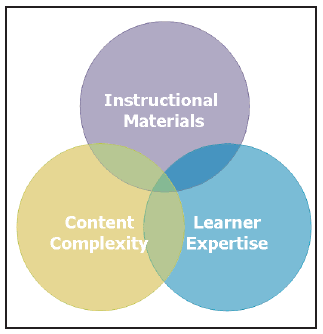
Figure 1 Three factors that affect cognitive load
Using the same checklist, considerthe e-Learning courses that your organization develops. What instructionalmethods do these courses typically employ? What combinations of media do youuse? How do you currently provide practice and assessment? Do learners complainthat the courses are too long? Too boring? What methods have you used toimprove the quality of your e-Learning?
This article provides practical,research-based guidelines that you can readily apply to your courses to makethem more efficient. Efficient instruction leads to better learning, fasterlearning, or both. In an age of increased information load and decreased trainingtime, maximum efficiency is more important than ever! To understand how you canmake your courses more efficient, we will first look at cognitive load theory and how it relates to human learning.
Then we will examine the three types ofcognitive load that instructional materials impose on the learner. Finally, wewill review three guidelines that you can use to make your learners’ experiencemore effective and more efficient.
Cognitiveload theory
In 1956, George Miller introduced the magical number 7±2. According to this psychologicalprinciple, working memory can only process seven chunks of information at anygiven time, plus or minus two items. Once a learning task exceeds thesecognitive limits, our ability to process and retain information diminishes. Asan example, consider which task is more difficult: trying to memorize andrecite a seven-digit phone number, or a sixteen-digitcredit card number.
Since the introduction of Miller’s 7±2 rule, John Sweller,Professor in the
Figure 1 illustrates threefactors to consider when applying principles derived from cognitive loadtheory: the learners’ level of expertise, the complexity of your content and,of course, the instructional materials. As part of the analysis phase, youshould determine whether your course’s target audience includes learners withno prior knowledge of the subject matter, with some intermediate knowledge, orperhaps even with advanced expertise. In addition, you should analyze yourinstructional objectives to determine whether they are simple or complex. Theguidelines of cognitive load theory must be adapted based on the complexity ofthe content and on the experience of the learners.
In addition to these factors, one shouldalso consider the media used to deliver the instruction. Two common e-Learningdelivery media are asynchronous Web-based training (WBT) courses andsynchronous virtual classroom sessions. These delivery media have uniqueattributes that impose varying levels of cognitive load. For instance, since aninstructor facilitates virtual classroom sessions, such sessions reduce thelearner’s ability to control the pace of the course, as one might find with aWBT, and therefore impose greater cognitive load. For the same reason, certaintypes of methods or media such as animations or video may impose more cognitiveload on the learner.
Typesof cognitive load
Table 2 summarizes the threetypes of cognitive load: intrinsic, extraneous, and germane. Certain forms ofcognitive load are beneficial while others waste limited mental resources. Yourgoal as an e-Learning developer should be to balance these three forms ofcognitive load in your instructional materials to maximize learning efficiency.
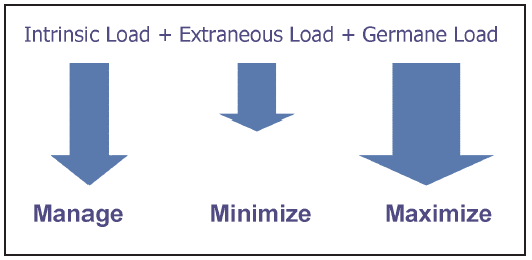
Figure 2 Balancing three sources of cognitive load to maximize efficiency
Figure 2 illustrates how ane-Learning course designer can exploit these three types of cognitive load.Intrinsic cognitive load will depend on the complexity of your instructionalcontent. Therefore, your goal as an instructional designer is to manage intrinsic load by segmenting and sequencing yourinstructional materials to help the learner deal with the complexity of thecontent. Extraneous cognitive load imposes mental work that does not promotelearning. Think of extraneous cognitive load as irrelevant load. There are anumber of guidelines for minimizingextraneous load, many involving theappropriate use of visuals, audio, and text in your training environment. Incontrast, germane cognitive load is actually beneficial to learning. Therefore,to improve the efficiency of your e-Learning courses, you should maximize the opportunities for germane load.
The three forms of cognitive load are additive. To optimizeinstructional efficiency you should manage intrinsic cognitive load, minimizeextraneous cognitive load, and maximize germane cognitive load. To hear a briefintroduction to extraneous and germane cognitive load from Dr. John Sweller,access the video located at https://www.clarktraining.com/mtest/video. When thevideo screen appears, press the play button to hear the commentary.
Manage intrinsic load: Teach supporting knowledge separate from teaching procedure steps
Compare the two course sequence plans shown inFigures 3 and 4. Which one do you believe imposes more intrinsic load?
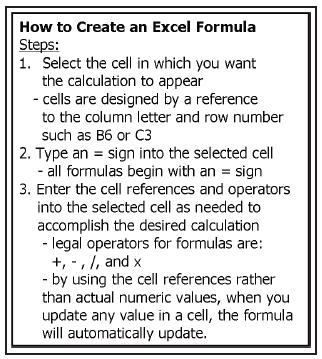
Figure 3 Lesson Outline 1

Figure 4 Lesson Outline 2
Many e-Learning courses focus on teaching learners howto perform procedural software tasks, such as the one shown in Figures 3 and 4.You could use a simple table, job aid or even a software simulation todemonstrate how to create a formula in Microsoft ®Excel. One way that you canmanage the intrinsic load imposed by this procedural content is to segmentsupporting knowledge from the actual procedure itself.
For example, in Figure 3, note that background informationthat supports each respective step is presented concurrently with that step.While a learner needs this supporting knowledge, research by Pollock andcolleagues (see References at the end of this article) indicates that novicelearners benefit when they learn supporting information separately from complexprocedural content. By sequencing supporting facts, concepts, and principlesprior to the procedure, as in Figure 4, you can improve the efficiency of yourinstruction.
Minimize extraneous load: Avoid redundant expressions of content
There are a number of cognitive load principles that,when applied, reduce extraneous cognitive load. Here we review one of these: redundancy.Redundancy refers to learning inefficiencies that result when we providelearners with too much information.
Rapid e-Learning tools make the development of multimediaquick and easy. Not only can you provide simple text and graphics in yourcourse, but you can also easily create and embed audio and video clips directlyinto your online content. As you begin to integrate these forms of richinstructional media, do you think it would be better to provide learners with theaudio narration only, a text script, or both?
Consider the sample Web-based lesson you reviewed atthe beginning of this article. You may have noted at the time that the lessonincluded audio narration. You may have also noted that a written transcript ofthe audio narration was included in the bottom right hand corner of the courseinterface. This redundant audio and written text is shown in Figure 5.
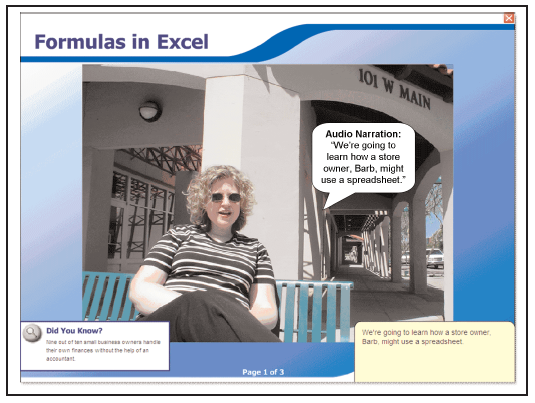
Figure 5 The use of text and audio of that text is a redundant expression of content. From Efficiency in Learning (2005)
In our forthcoming book titled Efficiency in Learning,Ruth Clark, Frank Nguyen, and John Sweller summarize research studies thatindicate e-Learning courses with redundant audio and text will overload cognitiveresources and depress learning. For example, a series of studies by Mayer,Heiser, and Lonn, and by
that learners who received a multimedia lesson with animationand audio narration alone performed on average 79% better than learners whoreceived a lesson containing animations, audio, and redundant text. In short,when you are delivering audio narration in an e-Learning course, it is betterto suppress any redundant written text. If the available technology or learners’language expertise prevent you from delivering audio in your e-Learning course,it is better to provide text only.
The redundancy principle stresses that less is usuallymore. For example, while it’s usually better to describe a visual with audioalone as discussed above, sometimes any words — whether text or audio — addedto a visual are redundant. This is either because the visual is inherentlyself-explanatory such as the example in Figure 6 OR because theaudience is already familiar with the visual and thus the visual is self-explanatoryto that audience.
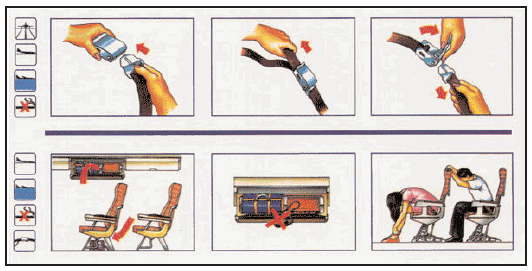
Figure 6 Airline safety card with self-explanatory visuals. From Efficiency in Learning (2005)
For example Kalyuga and colleagues (see References) overa series of three sessions trained technical apprentices how to interpret thecircuit diagrams of a motor. Initial learning was best from lessons that includeddiagrams described by text than from lessons with diagrams alone. However, bythe third session, this pattern reversed and the lessons with diagrams aloneled to better learning than the diagram and text versions. As learners gainedexpertise with the diagram, the textual descriptions became redundant anddepressed learning efficiency.
Maximize germane load: Help learners exploit examples through self-explanations
Recall that germane cognitive load is mental work thatleads to learning. We know that examples are one of the best ways to promotelearning. However, in many cases learners skip examples or only give them acursory review. Research has shown that students who study and process examplesdeeply learn more than students who either ignore examples or process them in ashallow way. One sign of deep processing of examples is when learners explainthe examples to themselves. Chi and others (see References) foundhigh-achieving students generated more self-explanations while studying scienceexamples than did lower-achieving students. On average, the high-achievingstudents created 15.5 self-explanations for each example while lower achieving studentsonly generated 2.75. What can you do to ensure that your learners process your exampleseffectively?
Figure 7 shows how the addition of a multiplechoice question to an example can encourage learnersto process the example deeply. In order to answer this question, the learnerneeds to review the example and to identify the principles behind the steps. Asa result of this deep processing, learners will build an accurate mental modelfrom the example. However self-explanations require mental processing inworking memory. Since this processing results in better learning, promptedself-explanations are one of a number of instructional methods you can use toimpose germane cognitive load.
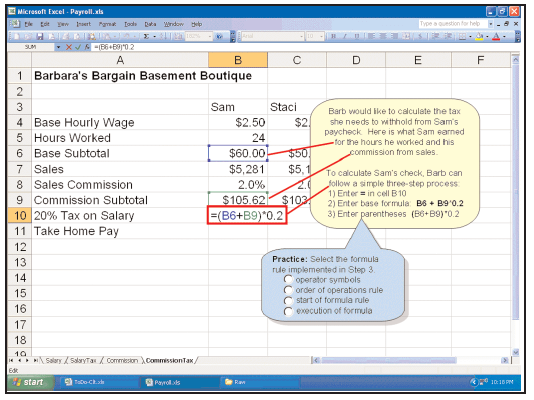
Figure 7 An inserted question prompts learner self-explanation of examples. From Efficiency in Learning (2005)
Conclusion
Today’s e-Learning authoring toolsprovide developers with many exciting ways to combine instructional methods andmedia to create compelling training content. Done well, your e-Learning coursescan be well-oiled, efficient learning environments that enable your learners tolearn faster, better or both. Done poorly, they could become minefields ofinformation that look more to your learners like letters and numbers flyingacross The Matrix than pages of an e-Learning course.
To avoid overloading your students,apply research-based principles that manage intrinsic, minimize extraneous, andmaximize germane cognitive load in your e-Learning courses. The threeprinciples discussed in this article are among a number of cognitive loadguidelines proven to improve the quality of your instructional materials.
References
Chi, M.T.H., Bassok, M., Lewis, M.W., Reimann, P., Glaser, R. (1989). Self-explanations: How students study and use examples in learning to solve problems. CognitiveScience, 13, 145-182.
Clark , R.C., Nguyen, F., and Sweller, J. (2005). Efficiency in Learning.:CA: Pfeiffer. (Available in December, 2005) San Francisco
Kalyuga, S.,
,P. and Sweller, J. (1998). Levels of expertise and instructional design. Human Factors,40(1), 1-17. Chandler
Mayer, R.E., Heiser, J., and Lonn, S. (2001). Cognitive constraints on multimedia learning: When presenting more material results in less understanding. Journalof Educational Psychology,93, 187-198.
, R., and Mayer, R.E. (2002). Verbal redundancy in multimedia learning: When reading helps listening. Journalof Educational Psychology, 94, 156-163. Moreno
Miller, G.A. (1956). The magical number seven, plus or minus two: Some limits on our capacity forprocessing information. PsychologicalReview, 63, 81-97.
Pollock, E.,
,P. and Sweller, J. (2002). Assimilating complex information. Learning and Instruction,12, 61-86. Chandler









